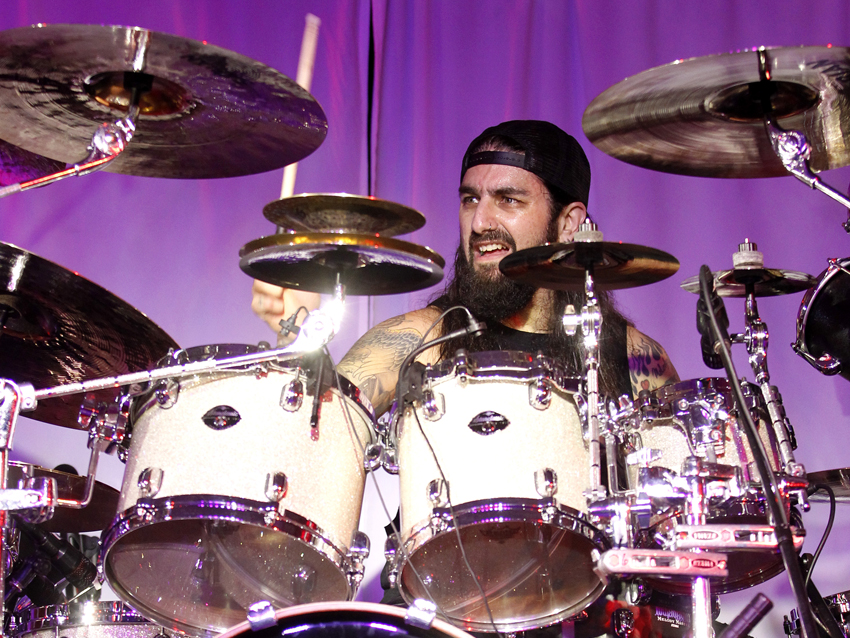
Mike Portnoy picks 10 essential drum albums
With 30 years of astonishing recorded work behind him, during which time he's established himself as one of the world's top drummers – as a founding member of Dream Theater, Liquid Tension Experiment, Transatlantic, Adrenaline Mob, Flying Colors and now The Winery Dogs, not to mention a series of popular cover bands – you might think that Mike Portnoy would have a long list of criteria for the drum records that he deems "essential."
True, he is a tough customer, but Portnoy is also an inveterate fanboy, and for him, choosing the best of the best largely comes down to embracing his inner teenager. "The key factor is the air drum element," he says. "If a record makes me want to play air drums, then it's a great drum album."
Beyond that, Portnoy admits that he does break down the components of albums when listening, a clear indication of the right and left brain working both independently and simultaneously. "For me, it involves about 10 levels of listening," he explains. "There’s the drumming, there’s the composition, the vocals, there’s the melodies, the production, the guitar and so on. But a great drum album is one where your attention is focused on what the drummer is doing, first and foremost, even with everything else that's going on."
Although he's played with some of the most gifted musicians on the planet, Portnoy emphasizes the importance of playing along to records in his development as a player, particularly during his formative years. “Before I took any lessons or classes, before I was in bands, the first level of education for me was playing along to records," he says. "That’s how I learned to get around the drum kit, just sitting in my room with the headphones on, playing to classic rock albums. I learned so many styles of music that way. It was also good for my timekeeping – you’re playing along to records that are usually pretty steady. It’s almost like using a metronome.”
Interestingly, Portnoy's selections for 10 Essential Drum Albums, which he's listed chronologically as he discovered them, mirror what he calls the three specific phases in his own drumming history: classic rock, prog and metal. "Looking at these 10 albums and drummers, their combined styles sum up my style and who I am in a nutshell,” he says. "They all played a big part in what I do and the music I make."
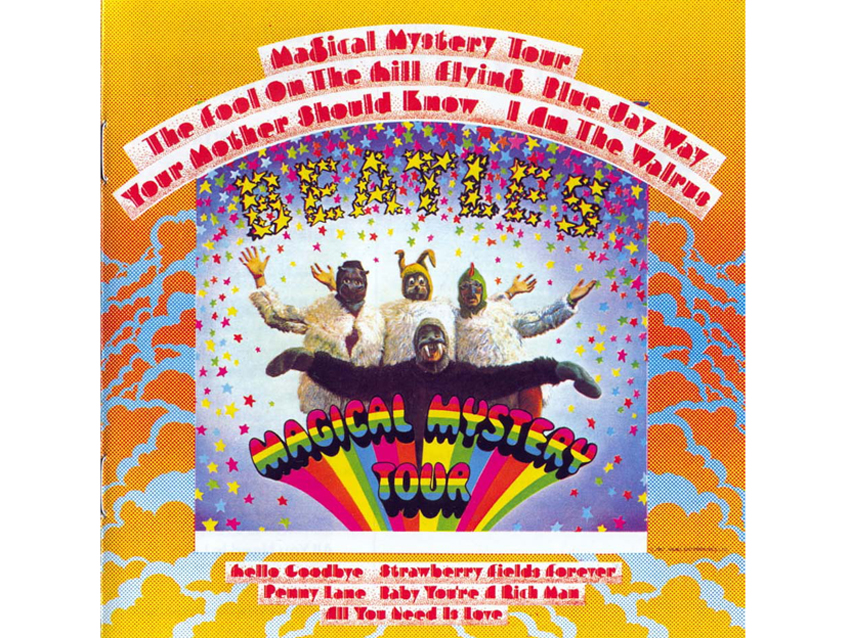
The Beatles - Magical Mystery Tour (1967)
“Ringo is where it all began for me. From the day I was born, he was my introduction to drumming and music in general. Picking one Beatles album is so hard – everything from Rubber Soul forward are masterpieces – so I’m going to go with what might be a weird choice: Magical Mystery Tour.
“This wasn’t even a real Beatles album; it was just a collection of singles. But I think it was a period where Ringo and the band began their experimentation in the studio. Strawberry Fields Forever and Penny Lane, both of which are on here, were the first tracks from the Sgt. Pepper sessions. Listen to what they were doing: Strawberry Fields was all about experimentation, and Penny Lane was all about simplicity. There’s a serious yin and yang of Ringo’s drumming in those two tracks.
“There’s also great drumming on I Am The Walrus – such a fantastic backbeat and groove. And there’s some other weirder songs, too, like the title track and Flying and Blue Jay Way. It captures Ringo during a very cool, very experimental period.
“There wouldn’t be drums as we know them if Ringo Starr hadn’t done it first. It goes beyond the fact that he was the drummer in the greatest band of all time; part of their innovation stems from his drumming. The backbeat on Penny Lane, the double-tracked drums on Lady Madonna – nobody was doing the kinds of things that Ringo was doing in the ‘60s. He was the first, and everything that followed did so in his footsteps.”
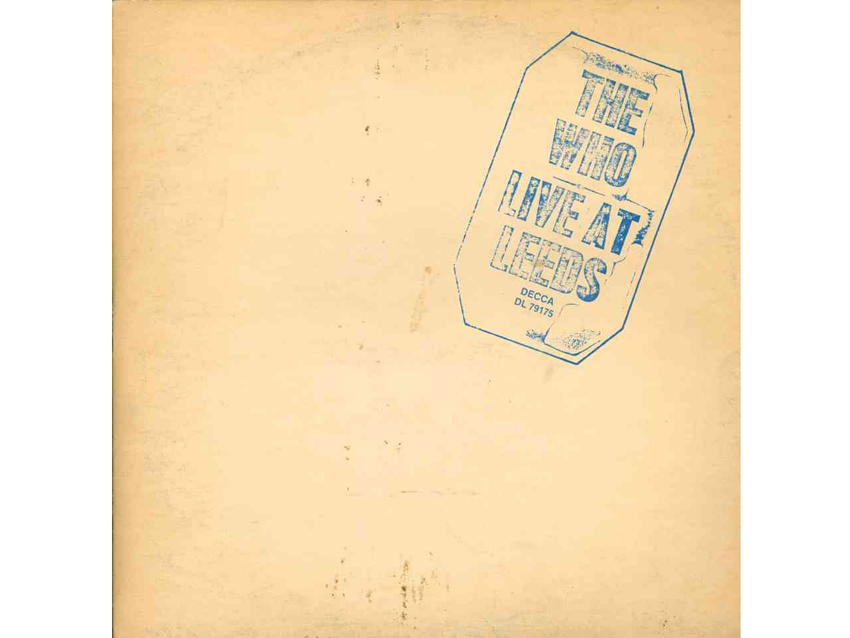
The Who - Live At Leeds (1970)
“Even though Ringo was my first influence, Keith Moon was my first true drum hero, the guy who made me want to be a drummer. It wasn’t so much about his actual playing; it was more about his persona and his performance on stage. The way he played live was absolutely captivating. You couldn’t take your eyes off of him. He played drums like a lead instrument.
“If I to pick an album, it’s Live At Leeds. This is Keith Moon at his most raw and in his natural environment. He was always contained in the studio. He would play with a hi-hat and was very controlled – well, relatively speaking. But on Live At Leeds you hear him bashing away with that bigger-than-life personality.
“The album also demonstrates what a tremendous live band The Who were. Keith and John Entwistle played lead drums and lead bass, and Pete and Roger were kind of holding down the fort. Usually it’s the other way around, but with The Who, the roles were reversed.”
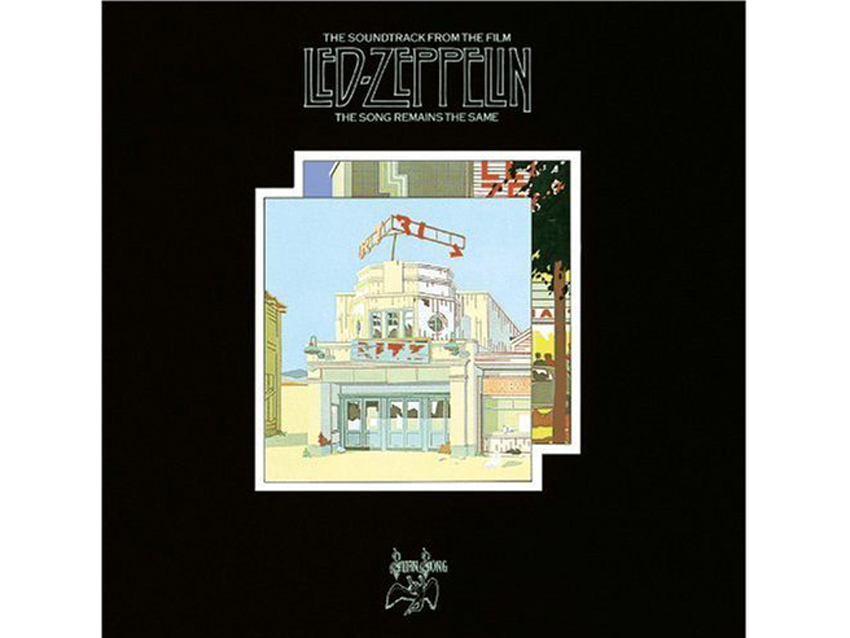
Led Zeppelin - The Song Remains The Same (1976)
“You can’t talk about Keith Moon without next talking about his counterpart, John Bonham. He’s certainly one of my other great drum heroes. But whereas Keith was the embodiment of chaos, John Bonham was the embodiment of control – and groove.
“He was the first drummer who played with equal parts power and finesse. Once again, I’m going with a live album, The Song Remains The Same, because it shows his true character. You get a little bit of everything from the band’s catalogue, and you also get to experience Bonham’s true onstage personality.
“I love the way that he would swing live. He’d do different variations from night to night, different fills. The Song Remains The Same captures all that; plus, you have Moby Dick, which was, at that time, the ultimate drum solo.”
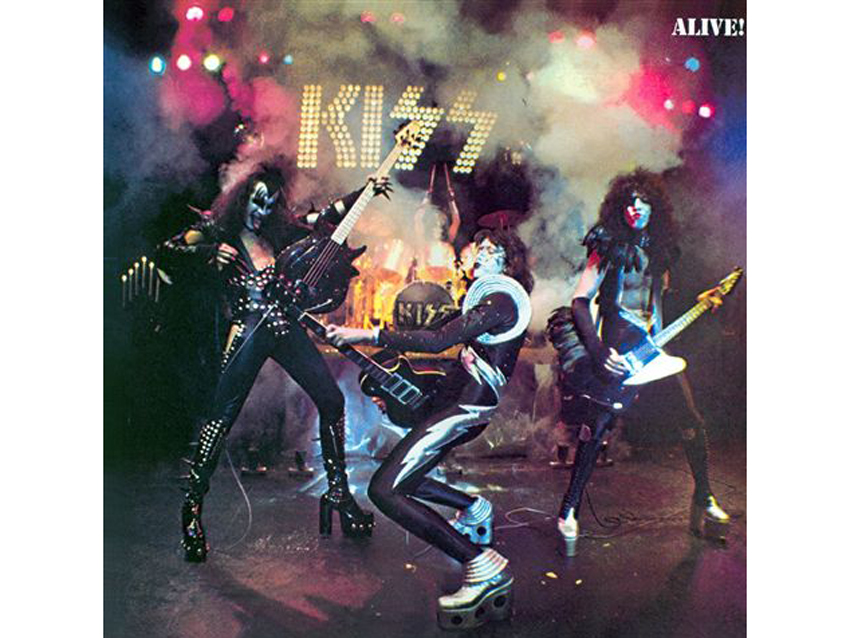
Kiss - Alive! (1975)
“I went through my Kiss phase around 1976, ’77, ’78. This is when I got my first drum set. I had learned the basics from John Bonham, Keith Moon and Ringo Starr, but once I started listening to Kiss and Peter Criss, I got into the whole theatrical side of what was going on.
“Like Ringo, Peter was never technically a quote-unquote great drummer – technically – but he was the right drummer at the right time, and he had a huge impact on my life. It was a sign of the times: When I was a kid in the late ‘60s, it was all about The Beatles; when I was a little older in the mid-‘70s, it was all about Kiss.
“The drum solo on 100,000 Years is probably the first one I ever learned note-for-note. You could air drum to it. It was almost constructed like a song – you could actually hear it going through movements. There’s some controversy whether or not this is truly a live album, but I think it still captures the drummer in his truest artistic element.”
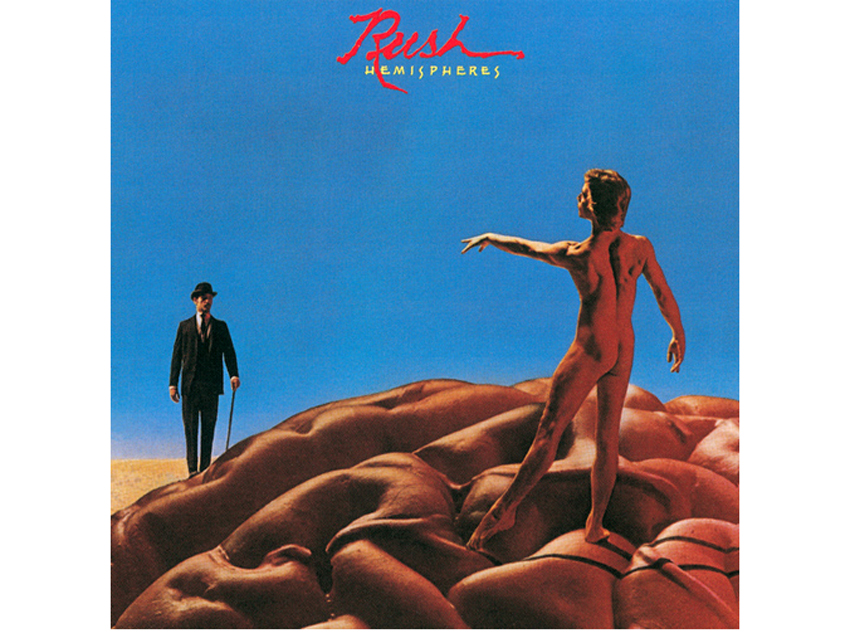
Rush - Hemispheres (1978)
“Now we leave the classic rock era and enter the world of prog rock. Towards the late ‘70s and early ‘80s, I discovered progressive music and progressive drumming. I was a teenager at that point, so I was evolving and wanting something more challenging.
“The first big one for me was Neil Peart. I went from being a boy to a man when I discovered Neil’s drumming. I seriously graduated to the next level once I began listening to him and learning his drumming.
“If I had to pick one album, it would be Hemispheres. This is Rush at their most complex and most daring, just taking these long songs as far as they could. All four songs on this album are masterworks of progressive drumming. Odd-time signatures, long instrumental sections, you name it – all of it made you want to play air drums.
“Permanent Waves, 2112, A Farewell To Kings and Moving Pictures are all classics, but I think Hemispheres is really it. La Villa Strangiato was the benchmark of drumming when I was 16 years old.”
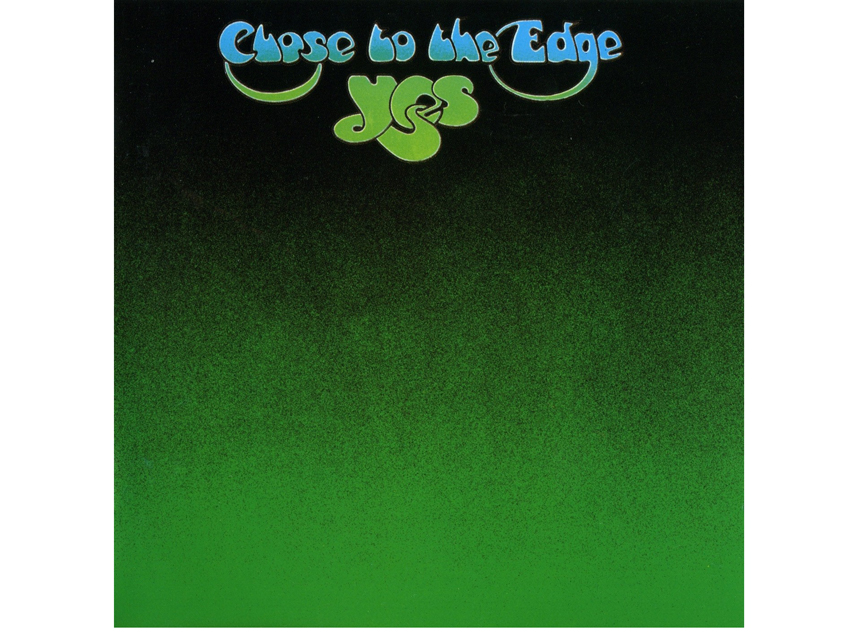
Yes - Close To The Edge (1972)
“After I discovered Rush, I then discovered Yes. Obviously, Alan White was also an influence, but it was the albums with Bill Bruford that had a huge impact on me. The holy trinity was The Yes Album, Fragile and Close To The Edge, but I’ll go with Close To The Edge because that was their masterpiece.
“This was Bill’s last album with the band before he jumped ship for King Crimson – which is a whole different conversation. With Bruford, there’s the Yes albums, the King Crimson catalogue and the first UK album. He’s like the godfather of prog drumming.
“Close To The Edge is brilliant through and through. Bill was bringing a real jazz swing to progressive rock drumming. More than most drummers, he matched jazz with rock at this point. Alan White, who followed Bill in Yes, was more of a basher, whereas Bill was more about finesse.”
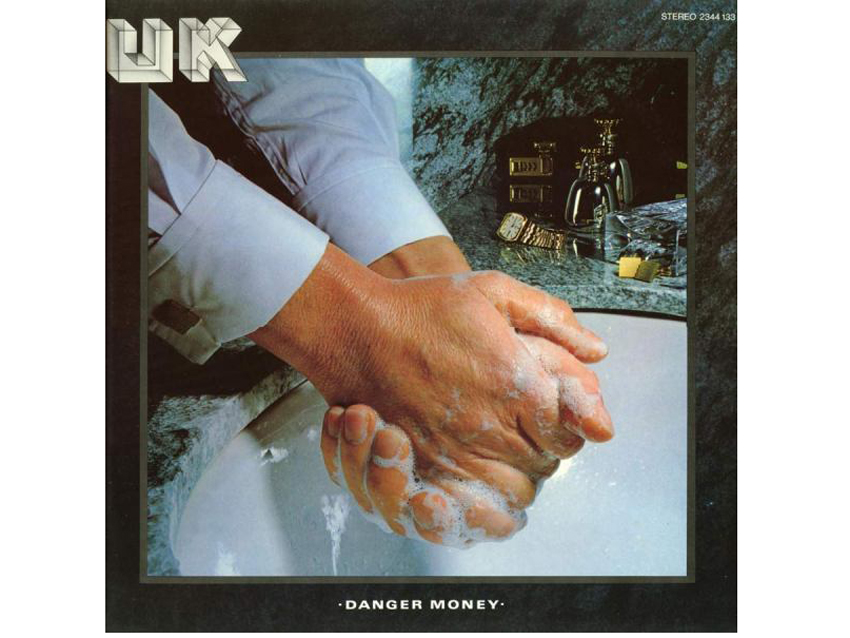
UK - Danger Money (1979)
“Next, I discovered the world of Frank Zappa’s music. Two of his drummers during this period were huge influences on me, Terry Bozzio and Vinnie Colaiuta.
“I’m not going to pick a Zappa album for Terry; I’m going to choose UK’s Danger Money. Terry was following in Bill Bruford’s footsteps coming into the second UK album. From playing with Frank, Terry had chops up the wazoo and this unbelievable technique. He was honing his skills in progressive music – the UK albums are unbelievable.
“It’s tough to pick just one from Terry. You’ve got the Zappa stuff; I love the first Missing Person’s album – that’s a great one – but I think I’ll go with Danger Money.”
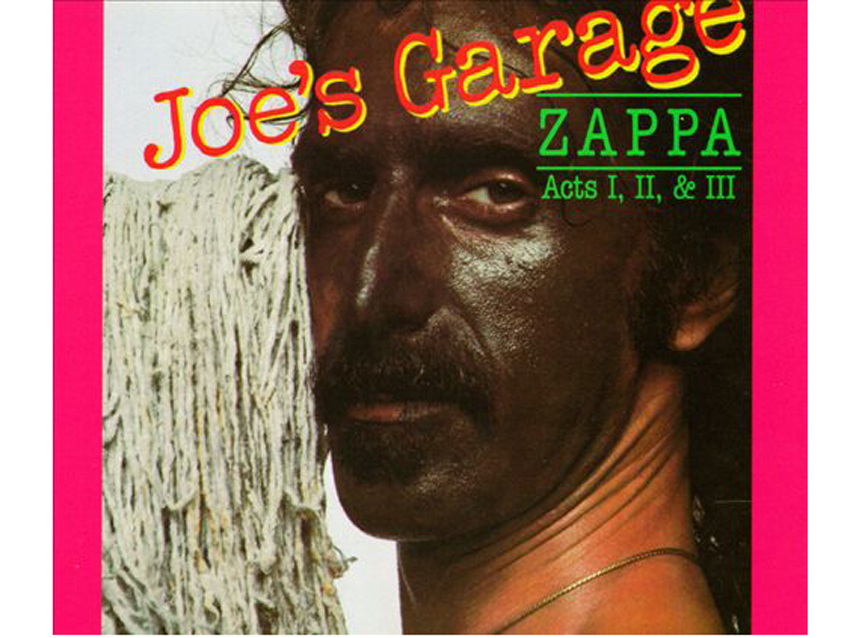
Frank Zappa - Joe's Garage Act 1, 2 and 3 (1979)
“Continuing with the Zappa school of drummers, now we have Vinnie Colaiuta. The three Joe’s Garage albums – Acts 1, 2 and 3 – represent a master class in drumming.
“Around this time, Vinnie was the ultimate session drummer – the feel of a Jeff Porcaro with mind-blowing chops and these polyrhythms that nobody was doing; Frank utilized these unbelievable polyrhythms.
"Some of the drumming on Joe’s Garage is just unbelievable. On the song Keep It Greasy, Vinnie is playing in 19/16 and 21/16, and he’s soloing in those time signatures and playing under the bar lines, all the while without missing a beat. He totally took polyrhythmic drumming to a new level in rock music.”
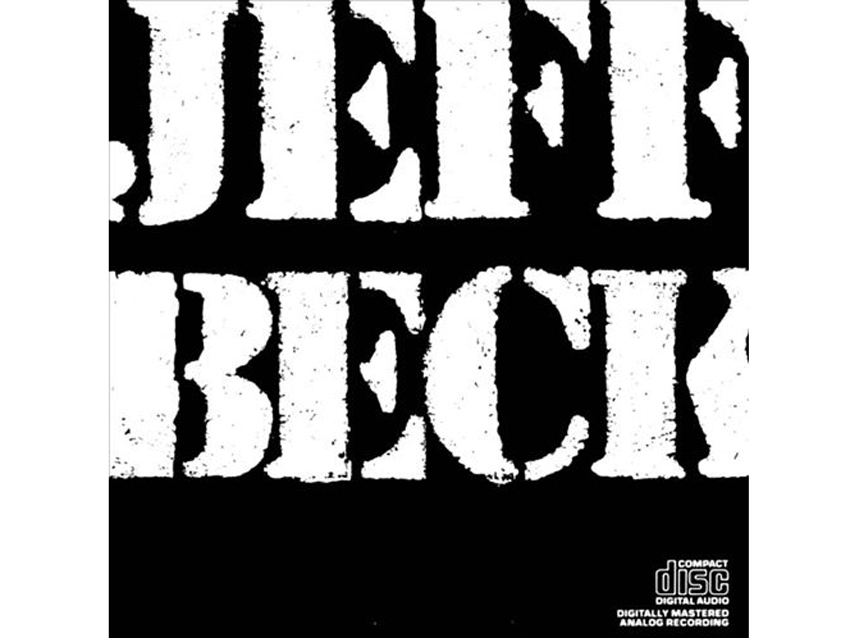
Jeff Beck - There And Back (1980)
“The last of the prog guys, Simon Phillips. He’s got such a great catalogue of amazing drumming – his work with Pete Townshend, his playing on the first Michael Schenker album – but if I had to pick one record, it’s Jeff Beck's There And Back.
“It has the quintessential Simon Phillips track with Space Boogie; what he did with double-bass drumming was completely groundbreaking. But there’s other unbelievably tasty stuff, as well – the simplicity of The Pump is a great example.
“Everything that Simon plays on this album is tasty. That’s the word that comes to mind when I listen to him playing drums.”

Tie: Metallica - Master Of Puppets (1986), Slayer - Reign In Blood (1986), Anthrax - Among The Living (1987)
“I’m cheating here with my three-way metal tie. Three albums and three drummers that hit at the same time and turned my world upside-down. It was around 1985, ’86, ’87 that the thrash scene came around. So many bands and drummers had a huge influence on me during this period, but the three most predominant were Lars Ulrich on Metallica’s Master Of Puppets, Dave Lombardo on Slayer’s Reign In Blood and Charlie Benante on Anthrax's Among The Living..
“These three albums completely pioneered metal drumming, not only raising the bar but putting it through the roof. Nobody was doing fast double-bass drumming like this. All three of these guys – their drumming was groundbreaking and so were the bands they were in. These are classic thrash albums.
“In my opinion, these bands saved the ‘80s. Up until they came along, we had either horrible hair metal or horrible MTV pop crap. Suddenly, we had Metallica, Slayer and Anthrax, and they just burned the town down. I was immersed in that scene. To this day, I know every single beat and groove on all these of these records inside and out.”
Joe is a freelance journalist who has, over the past few decades, interviewed hundreds of guitarists for Guitar World, Guitar Player, MusicRadar and Classic Rock. He is also a former editor of Guitar World, contributing writer for Guitar Aficionado and VP of A&R for Island Records. He’s an enthusiastic guitarist, but he’s nowhere near the likes of the people he interviews. Surprisingly, his skills are more suited to the drums. If you need a drummer for your Beatles tribute band, look him up.
